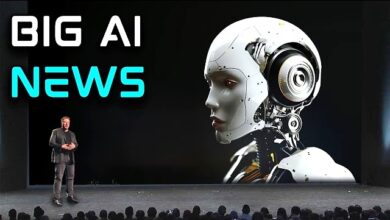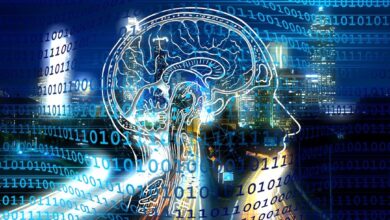How to Create an AI System in 5 Steps-Kat Technical
A Step by Step Guide on How to Build an AI System

AI system has transformed various industries, from healthcare to finance. Have you ever wondered how you can create your own AI project? In this article, we’ll dive into the process of making your own artificial intelligence from the ground up. Whether you’re a beginner or have some coding experience, we’ll cover the essential steps, concepts, and resources you need to bring your AI idea to life.

Understanding the Basics
To embark on your AI journey, it’s crucial to understand the fundamental concepts. AI refers to the simulation of human intelligence in machines, enabling them to perform tasks that typically require human cognition. Begin by grasping concepts like machine learning, deep learning, and neural networks.
Defining Your AI Project
Every successful AI project starts with a clear idea. Identify the problem your AI will solve. Whether it’s image recognition, natural language processing, or recommendation systems, defining the project scope is essential.
Learning Programming Languages
To create AI, you’ll need to code. Python is the go-to programming language for AI development due to its simplicity and extensive libraries like TensorFlow and PyTorch. LSI Keywords: “Learn Python for AI,” “best programming languages for AI.”
Delving into Machine Learning
Machine learning is the heart of AI. Dive into machine learning algorithms such as linear regression, decision trees, and support vector machines. These algorithms enable machines to learn patterns from data.
Exploring Deep Learning
Deep learning takes machine learning a step further. Learn about artificial neural networks and how they emulate the human brain. Concepts like convolutional neural networks (CNNs) and recurrent neural networks (RNNs) are vital for advanced AI projects.
Data Collection and Preprocessing
Data fuels AI. Gather relevant data for your project and preprocess it to remove noise and inconsistencies. Quality data is crucial for training accurate AI models.
Training Your AI Model
Train your AI model using the data you’ve collected. Utilize frameworks like TensorFlow and PyTorch to build and train neural networks. Experiment with hyperparameters to achieve optimal performance.
Testing and Evaluation
After training, test your AI model using separate data. Evaluate its accuracy, precision, recall, and F1 score to ensure it meets your project goals.
Fine-Tuning and Optimization
Optimize your AI model by fine-tuning its parameters. Techniques like gradient descent and regularization can enhance your model’s performance.
Deployment and Integration
Once satisfied with your model’s performance, deploy it into your desired application. Integrate it into websites, apps, or other systems for real-world use.
Continuous Learning and Improvement
AI is a field of continuous learning. Stay updated with the latest advancements, attend conferences, and participate in online courses to enhance your skills.
Expert Insights: Tips for Success
Stay Curious:
AI is an ever-evolving field. Maintain curiosity and eagerness to learn new techniques and approaches.
Collaborate:
Join AI communities, forums, and open-source projects to collaborate with like-minded individuals.
Start Small:
Begin with simpler AI projects to build a solid foundation before tackling more complex endeavors.
FAQs
Q: Can I create AI without coding experience?
A: While coding experience helps, there are user-friendly AI platforms that require minimal coding knowledge, making AI accessible to beginners.
Q: What’s the role of data in AI?
A: Data is the backbone of AI. AI models learn patterns from data, so quality data is essential for accurate results.
Q: Are there AI courses available online?
A: Absolutely! Many platforms offer online AI courses, both free and paid, catering to all skill levels.
Q: Can I make AI without a strong math background?
A: While math knowledge is beneficial, various AI libraries and tools abstract complex math, allowing you to focus on implementation.
Q: What’s the future of AI?
A: The future of AI is promising. It will continue to drive innovation in fields like healthcare, autonomous vehicles, and more.
Q: Are AI and Machine Learning the same?
A: No, AI is the broader concept of simulating human intelligence, while machine learning is a subset of AI focused on algorithms and statistical models.
Conclusion:
Creating your own artificial intelligence may seem daunting, but with the right guidance and dedication, it’s an achievable goal. By understanding the core concepts, learning programming languages, and mastering machine learning and deep learning techniques, you can bring your AI project to life. Remember, AI is a journey of continuous learning, so stay curious and embrace the exciting possibilities it offers.




